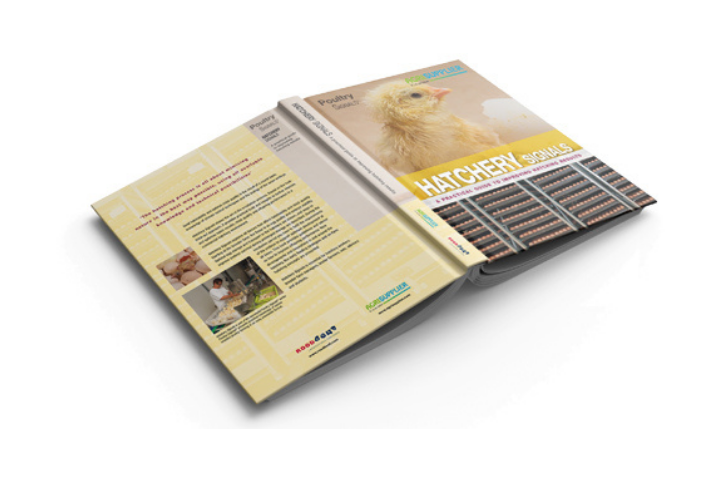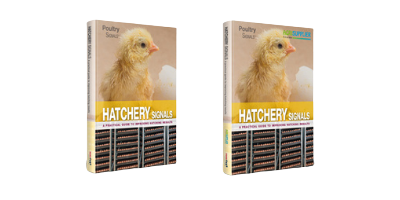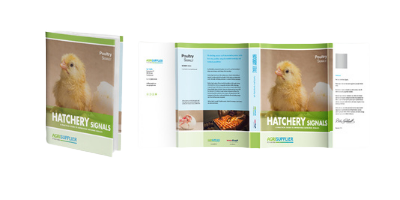A Practical guide to improving Hatching Results
Good hatchability and optimal chick quality is the result of a sound basic knowledge of climate control techniques and the biology of the avian embryo.
Hatchery Signals shows the art of the incubation process. Based on the look-think-act approach, it provides practical tools and insights to further improve and optimise hatch results, chick quality and offspring performance in a commercial hatchery environment.
Hatchery Signals explains all factors that affect hatchability and chick quality. Starting at the breeder farm, the focus is on egg quality and embryo viability. Optimal egg storage and transport to the hatchery are shown, and ways to improve embryo survival during prolonged storage are described. During the incubation period you have to fulfil the requirements of the embryo to support optimum development at all times. This book provides guidelines and advice on how to improve offspring performance. New developments and innovations in and around the hatchery, like early feeding strategies and on-farm hatching concepts are
presented.
Hatchery Signals is essential for hatchery management and staff, breeder farm managers, broiler farmers, breeder companies, incubator companies, feed companies, students, veterinarians, poultry advisors, broiler processing plants, farm equipment manufacturers, etc. in both the broiler and layer industry.
Hatchery Signals is part of the Poultry Signals series©. The Poultry Signals series is highly appreciated by professionals in the poultry industry and is distributed world-wide. The series consists of Poultry Signals, Layer Signals, Broiler Signals, Egg Signals, Broiler Meat Signals, Turkey Signals and Breeder Signals.
Need-to-know knowledge
The aim of this project is to improve hatching results. It is a practical book with information that every person involved in hatchery business should know. Not a nice coffee-table book, but a book with need-to-know knowledge.
Signals-concept: Look-think-act
The Signals-concept always starts from observation and stimulates readers to look, think and act. This is the main success factor of the Signals book series. The Signals concept implies that the information is presented in a very visual way. Over 500 photographs, illustrations and diagrams tell the story. Practical knowledge comes first and complex theory will be limited to an absolute minimum. In this way the information is easily absorbed and brought into practice by the reader.




